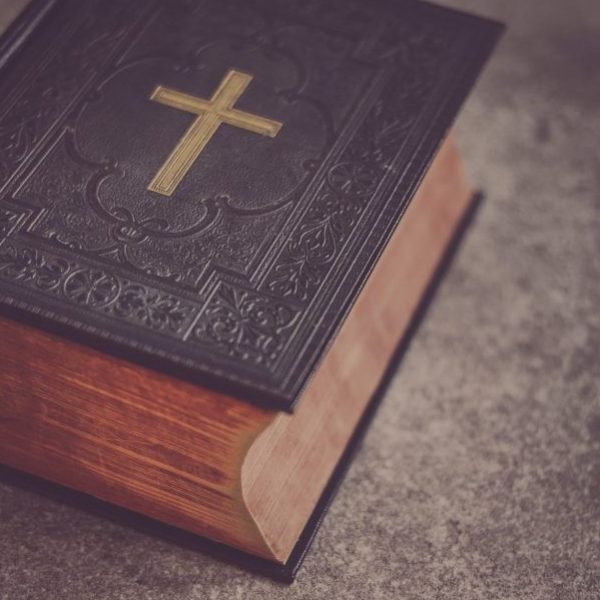Francis Bremer Follows in the Footsteps of the Puritans

Francis Bremer – credit Keegan L. Bremer
Francis J. Bremer, author of the recently published biography, Building a New Jerusalem: John Davenport, a Puritan in Three Worlds, continues his discussion of the intertwined religious and political histories of Boston, the first founders—its clergy, and their importance to our historical understanding.
Francis J. Bremer—
When I was a young man – long before I was an aspiring professional historian – I was captivated by Francis Parkman’s multi-volume history of the eighteenth-century struggle between the French and the English for the control of North America. Spending vacation time in northern New England, upstate New York, and even some trips to Canada, I relished seeing the grounds on which battles had been fought and over which armies marched. The fact that Parkman had himself traversed the landscape of which he wrote somehow added to my interest. This sense that somehow Parkman’s knowledge of the land as well as of the manuscripts added to his ability to tell his story was reinforced by my later reading of the works of the twentieth century historian Samuel Eliot Morison. A noted sailor as well as an academic, Morison (also a fan of Parkman) embraced the idea that recreating the voyages of Columbus and other explorers of the Atlantic made him a better chronicler of the past.
As my own focus has shifted to writing biography I have found that my understanding of seventeenth century men and women is enhanced by spending time in the places where they lived, studied, and labored. When I was writing my life of John Winthrop – John Winthrop: America’s Forgotten Founding Father –I spent considerable time in England trying to get a sense of the world he lived in before emigration to America. I was particularly fortunate to be offered local accommodation in many visits to Groton, Suffolk by Martin and Jane Wood, and Martin was an invaluable guide to the entire region. The essential landscape of the communities in which Winthrop was raised has not changed (though the crops grown have). Walking the paths he walked, exploring the ancient fort mounds where he played, sitting in the churches where he worshipped, experiencing the climate and the long summer days and long winter nights gave me an appreciation of influences that helped shape him. The kindness of the then residents allowed me to come inside the homes where he lived in his youth and early adulthood. Standing in a Groton field and seeing the steeples of the churches of the surrounding communities that he saw was a reminder of the pervasive influence of religion in the StourValley. Following his path to Cambridge one can walk through the precincts of TrinityCollege, which his father served as auditor and where he studied. The overwhelming impression was the magnificence of the structures and richness of life that Winthrop willingly surrendered when he Christopher Thompson was my guide through the churches and estates of southeast Essex where Winthrop briefly settled in the years following his first marriage.
 Winthrop’s uncle and some of his cousins settled in Ireland, and so my wife and I went in search of the sites of their homes in Aghadown and Bandon. In London most of the parishes and homes that Winthrop and his kin knew were destroyed in the Blitz during World War II, but a few sites that Winthrop would have frequented – the Tower, Westminster Palace, the Inns of Court, and the Guildhall survive. In New England, of course, there are few remnants of the seventeenth century that have survived, progress rather than enemy attacks having razed our seventeenth century heritage. The public graveyard in which Winthrop, Davenport and other leaders of the Massachusetts Bay Colony were buried (and alongside of which King’s Chapel was later built) still remains, and it is possible to find the markers that denote the location of Winthrop’s homes and other sites of historical importance. Some physical artifacts of Winthrop’s time were found in the excavations associated with the Big Dig and are on display in the Commonwealth Museum next to the JFK Library. Outside of Boston parts of the Mystic River where the Winthrops owned a country farm and where John launched his trading vessel, The Blessing of the Bay, are relatively undeveloped. But to get a sense of the physical challenges that the colonists faced the best one can do is to visit excellent recreations such as Plimoth Plantation and Salem’s Pioneer Village.
Winthrop’s uncle and some of his cousins settled in Ireland, and so my wife and I went in search of the sites of their homes in Aghadown and Bandon. In London most of the parishes and homes that Winthrop and his kin knew were destroyed in the Blitz during World War II, but a few sites that Winthrop would have frequented – the Tower, Westminster Palace, the Inns of Court, and the Guildhall survive. In New England, of course, there are few remnants of the seventeenth century that have survived, progress rather than enemy attacks having razed our seventeenth century heritage. The public graveyard in which Winthrop, Davenport and other leaders of the Massachusetts Bay Colony were buried (and alongside of which King’s Chapel was later built) still remains, and it is possible to find the markers that denote the location of Winthrop’s homes and other sites of historical importance. Some physical artifacts of Winthrop’s time were found in the excavations associated with the Big Dig and are on display in the Commonwealth Museum next to the JFK Library. Outside of Boston parts of the Mystic River where the Winthrops owned a country farm and where John launched his trading vessel, The Blessing of the Bay, are relatively undeveloped. But to get a sense of the physical challenges that the colonists faced the best one can do is to visit excellent recreations such as Plimoth Plantation and Salem’s Pioneer Village.
In writing biographies I have tried to evoke a sense of the physical world in which those I wrote about lived. Loved, and died. To the extent that I have succeeded I believe the reason rests in my effort to visit the sites I write about and while there to seek to imaginatively recreate the experiences of those long departed characters. This is not to dismiss traditional research and my impressions are reinforced by primary and secondary sources that discuss the nature of everyday life in those communities at those times.
Research for a recent collection of biographical essays – First Founders: American Puritans and Puritans in an Atlantic World – took me to the areas centered on England’s Boston, where John and Judy Cammack took my through the countryside where John Cotton, Anne Hutchinson, Thomas Dudley (and his daughter, the future Anne Bradstreet) and the Pilgrims William Brewster and William Bradford lived prior to their departure for the New England. Travels in southern New England gave me a better sense of the geography of the Saybrook and New Haven colonies. A trip to Antigua enhanced my understanding of the island where Samuel Winthrop settled and became governor. The kindness of the commander of the US Naval base there allowed me to find the rough location of that Winthrop’s own “Groton Hall” home and some of the physical landmarks he mentioned in his letters.
Research for Building a New Jerusalem: John Davenport, a Puritan in Three Worlds had me repeating some of my former journeys – to London in particular (where the same wartime destruction that impedes understanding Winthrop’s physical London is true) – but also to additional places. I made my first visit to Coventry, England. There I visited Holy Trinity Church, where John Davenport was baptized, walked the remnants of the city wall which stood in his time to get a sense of the dimensions of his home town, entered St. Mary’s Guildhall where his uncle and his father served on the city government, walked along Spon Street with its remaining Tudor structures, and was able to find the locations of numerous other sites that were part of John Davenport’s youth. Davenport left Coventry to study at OxfordUniversity, first at MertonCollege and then at Magdalen Hall (different from MagdalenCollege). The relevant buildings are still there and with the help of current fellows I was able to establish where the young scholar probably boarded and which buildings would have been frequented by him in his studies.
Davenport’s studies were interrupted when his family would no longer pay for his university expenses, and he went north to accept a position as chaplain at Hilton Castle in Northumberland. Gill Cookson, Christine Newman and Maurice Bates got me access to the remains of the castle. Even with today’s rail systems and highways, the distance of the location from Coventry and Oxford and the somewhat bleak physical and social environment are still evident. The significance of Davenport’s sojourn in the Netherlands – his “second” world — after his London ministry has been underestimated by many scholars. Jeremy Bangs was a wonderful guide to both the Amsterdam archives and to the life of English exiles in the Netherlands in the early seventeenth century. The multiplicity of language and culture in modern Amsterdam reminds one of the comparable diversity of Rembrandt’s Amsterdam when Davenport spent time there. The English congregation in Amsterdam still worships in the Beguinnage and John Cowie gave me a tour of the building.
Like Boston and most other American communities, little of the seventeenth century remains in New Haven, but the nine square street plan of the town remains and one can see where the church was, where Davenport lived (now the site of the local TV station), where his friend Governor Theophilus Eaton lived across the street, and the path Davenport walked to the church. The imposing rock formations that frame the town remain and on West Rock one can walk into the collection of boulders where the regicides Whalley and Goffe found temporary refuge, remembered as Judges Cave.
The fact that there are many more homes, churches, and other buildings of the seventeenth century that stand in England and the Netherlands than in the United States is in part the result of conscious decisions made about the value of the past, but even more the result of the greater solidity and permanence of the physical structures in the worlds the colonists left. That itself tells us something important of how the world the colonists left compared to the one they labored to build.
Today’s scholar can look forward to a time when research can be conducted in a university office without any travel involved. Seventeenth century books that I had to travel to read can now be accessed and downloaded from the Early English Books Online or Early American Imprints. England’s State Papers and numerous other archival materials are likewise available at a computer terminal near the scholar. The danger is that with so much so available it will be easy for students of the period to ignore those increasingly few manuscripts that are not so digitized. Travel to archives and skill in deciphering old handwriting should still be an important part of the scholarly process. But I would argue that it is also important to leave the ivory tower and visit the places where history was made. I know it has made a great difference to me in helping to recreate the foreign country that is the past.
Francis J. Bremer is the author of over a dozen works on colonial history, most recently First Founders: American Puritans and Puritanism in an Atlantic World (University Presses of New England, 2012). His Building a New Jerusalem: John Davenport, a Puritan in Three Worlds is now available from Yale University Press.




